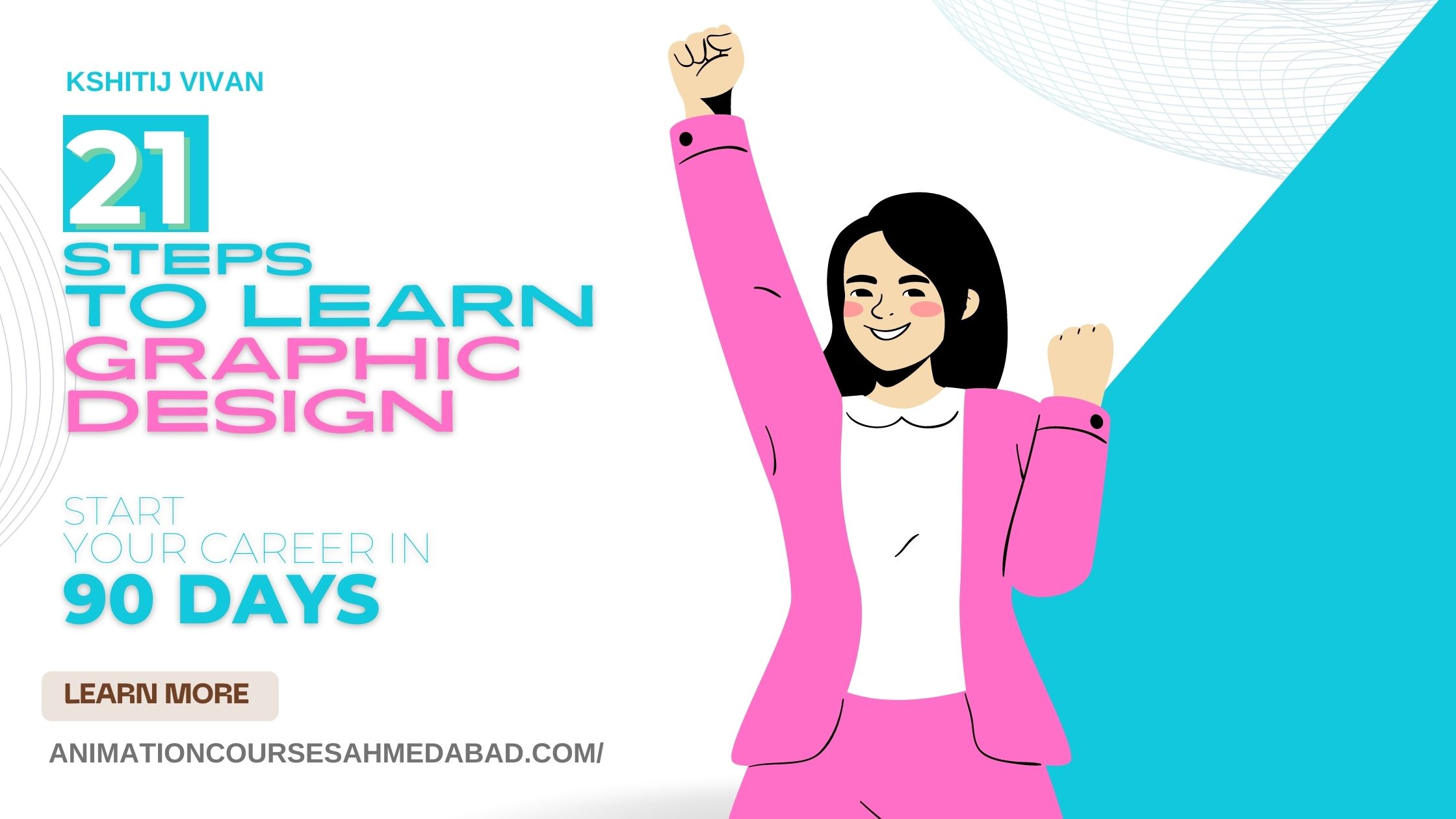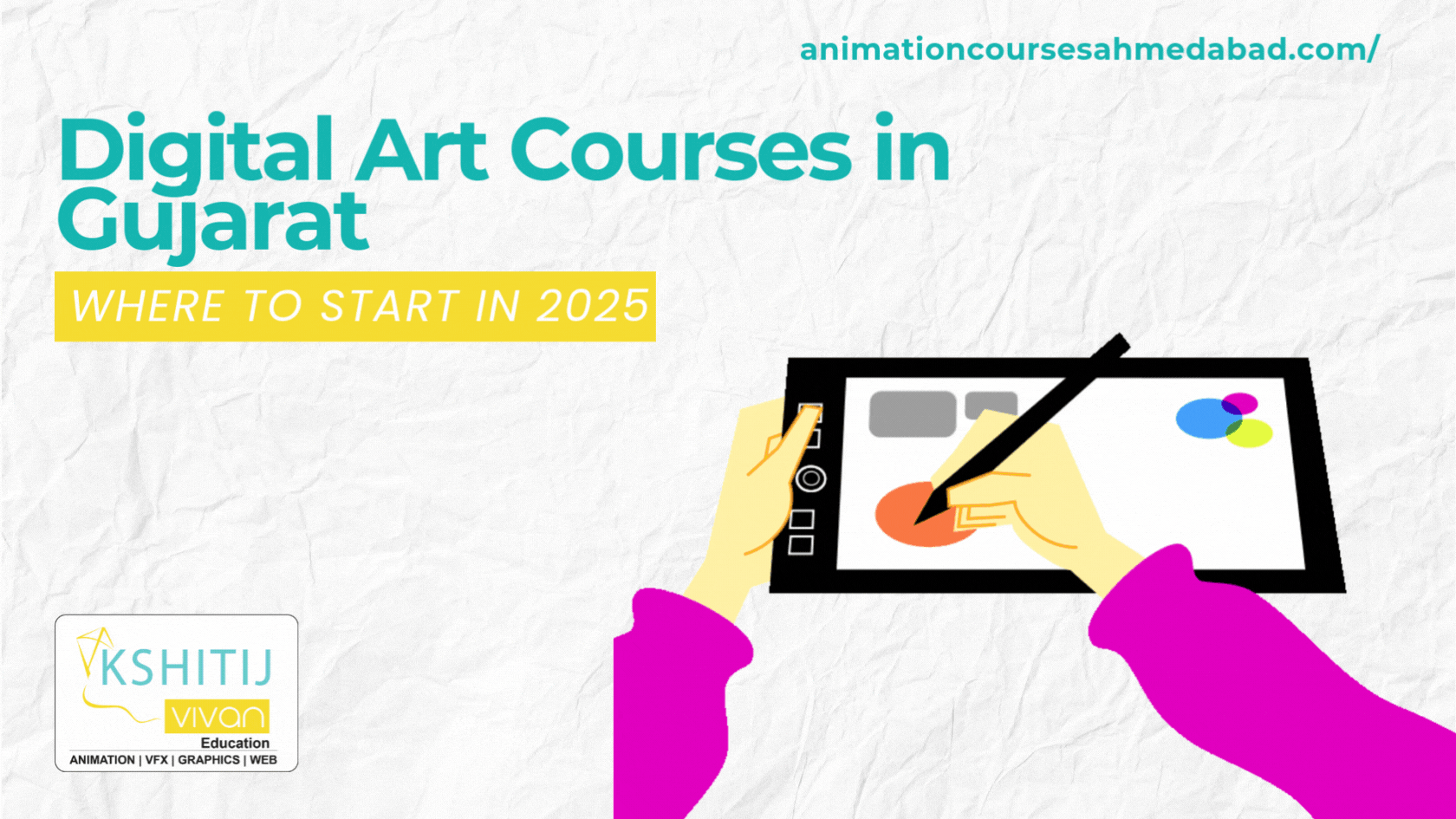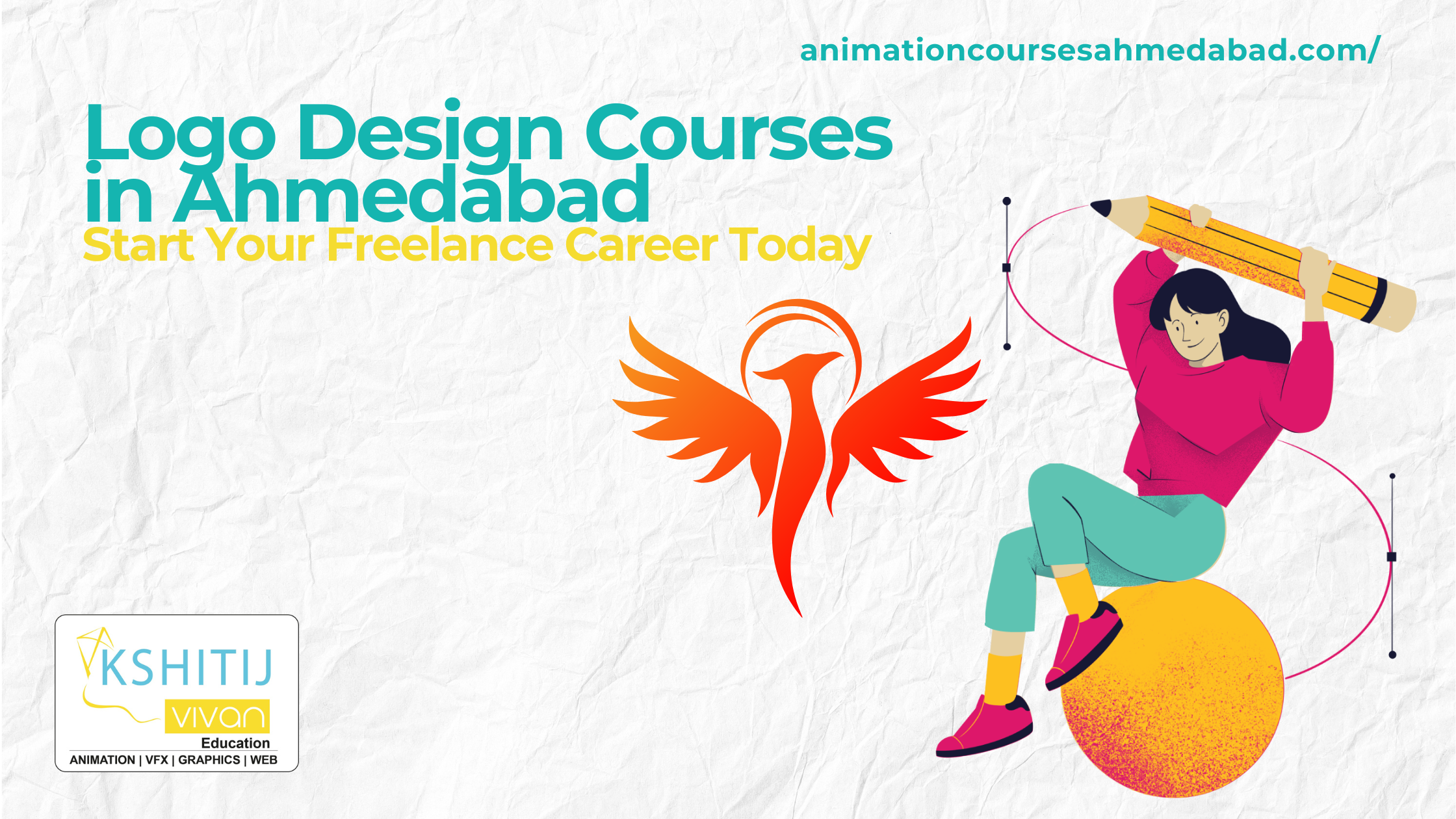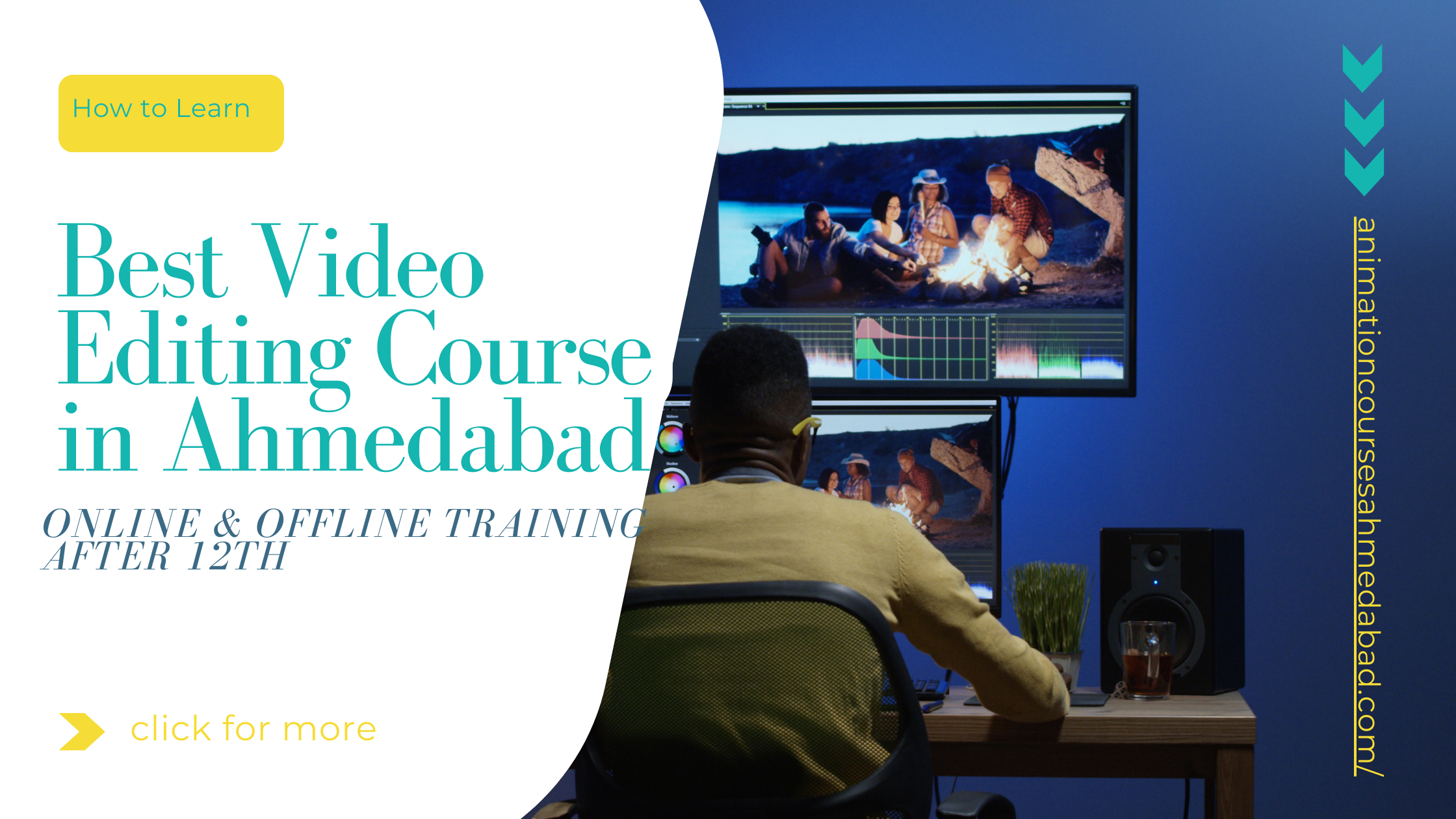
Learn Graphic Design in 21 Steps: Fast Track Your Career in 90 Days
If you aspire to become a skilled graphic designer and fast-track your career in just 90 days, you've come to the right place.
In this comprehensive guide, we will explore 21 essential steps that will equip you with the necessary skills and knowledge to excel in the field of graphic design.
Why graphic design is a lucrative and in-demand career choice?
Graphic design is a thriving industry that offers numerous opportunities for creative individuals.
With the increasing importance of visual communication in today's digital world, businesses, and organizations are constantly seeking skilled graphic designers to create compelling designs that resonate with their target audience.
Whether it's designing logos, marketing materials, websites, or mobile apps, graphic designers play a crucial role in shaping brand identities and conveying messages effectively.
Setting the goal: Fast-tracking your graphic design career in just 90 days:
Embarking on a career in graphic design can seem overwhelming, but with a focused approach and a clear goal, you can fast-track your journey.
This article outlines a comprehensive 21-step plan that covers essential areas of graphic design, from mastering software to understanding design principles and building a strong portfolio.
By dedicating time and effort each day, you can make significant progress in just 90 days and kick-start your graphic design career.
1. Understanding the Basics
The core principles and elements of graphic design:
Before diving into the technical aspects, it's crucial to grasp the fundamental principles and elements of graphic design.
These include concepts such as balance, contrast, hierarchy, alignment, and white space. Understanding these principles will guide your design decisions and help you create visually pleasing and effective designs.
Color theory and its importance in design:
Colors evoke emotions and convey messages, making color theory a vital aspect of graphic design. Learn about color schemes, color psychology, and how to use color effectively to enhance the visual impact of your designs. Experiment with different color combinations and understand the psychological associations attached to each hue.
2. Exploring Design Software
Introduction to essential design software:
Graphic design is heavily reliant on specialized software. Familiarize yourself with industry-standard tools such as Adobe Creative Suite (including Photoshop, Illustrator, and InDesign) and Sketch. These graphic design software packages offer a wide range of features and capabilities to create and manipulate images, illustrations, typography, and layouts.
Navigating the user interface and understanding key tools:
Once you've chosen your design software, take the time to understand its user interface and the functions of key tools. Familiarize yourself with the layout, panels, and menus. Learn how to navigate through the software efficiently and discover the essential tools that will streamline your design workflow.
3. Learning Typography
The power of fonts and their impact on design:
Typography is the art of arranging and styling typefaces. Fonts have the power to convey different moods, evoke specific emotions, and enhance the overall visual appeal of a design. Learn about different font classifications, font pairing techniques, and how to use typography effectively to communicate your message.
Choosing the right typefaces and creating a typographic hierarchy:
Selecting the appropriate typefaces for your designs is crucial. Understand the characteristics of different typefaces, such as serif, sans-serif, script, and display fonts, and how they can be best utilized for various design purposes. Additionally, learn how to establish a typographic hierarchy by manipulating font sizes, weights, and styles to guide the viewer's attention and create a visual hierarchy within your designs.
4. Mastering Layout Design
Principles of effective layout composition:
Layout design involves arranging visual elements, text, and images in a cohesive and visually pleasing manner. Learn about composition techniques such as the rule of thirds, grid systems, and the use of whitespace. These principles will help you create balanced and aesthetically pleasing designs that effectively communicate the intended message.
Creating balanced and visually appealing designs:
Achieving visual harmony and balance is crucial in layout design. Experiment with different arrangements of elements, consider their spatial relationships, and ensure that the design is visually appealing and engaging. Learn how to strike a balance between text and images, create a visual hierarchy, and use alignment to create a sense of order within your designs.
5. Incorporating Images and Illustrations
Sourcing and using high-quality images and illustrations:
Images and illustrations play a vital role in graphic design. Learn how to source high-quality images from stock photo websites, use professional-grade illustrations, or create custom graphics. Understand the legal aspects of image usage and licensing to avoid copyright infringement.
Techniques for image manipulation and integration:
In graphic design, the ability to manipulate and integrate images seamlessly is essential. Learn how to use software tools like Photoshop to retouch and enhance images, adjust colors, remove backgrounds, and create visually striking effects. Experiment with different blending modes, layer styles, and filters to transform your images and make them harmonize with your overall design concept.
6. Understanding Branding and Identity
The importance of brand identity in graphic design:
Branding is crucial for businesses to establish a unique and recognizable identity. As a graphic designer, understanding brand identity is vital when working on projects. Learn how to interpret brand guidelines, maintain consistency across different design materials, and effectively communicate a brand's values and personality through visual elements.
Creating cohesive and memorable brand designs:
To create cohesive brand designs, focus on elements such as logos, color palettes, typography, and imagery that align with the brand's identity. Explore techniques to develop visual systems that can be applied consistently across various marketing collateral. By creating memorable brand designs, you'll contribute to the brand's recognition and success.
7. Exploring Print Design
Designing for various print media:
Print design encompasses a wide range of materials, including brochures, posters, business cards, and more. Understand the specific requirements and constraints of each print medium. Learn about layout dimensions, color modes (CMYK), print specifications, and file formats (such as PDF and EPS) to ensure your designs are optimized for high-quality printing.
Understanding print specifications and file formats:
Different print materials require specific specifications for successful reproduction. Familiarize yourself with standard print sizes, resolution requirements, bleeds, and safe zones. Additionally, learn about the various file formats used in print design, such as PDF, EPS, and AI, and when to use each format to ensure compatibility and maintain design integrity.
8. Web Design Fundamentals
Principles of user-centered web design:
Web design focuses on creating visually engaging and user-friendly interfaces. Understand the principles of user-centered design, including intuitive navigation, clear calls-to-action, and responsive layouts. Learn how to create designs that enhance the user experience and effectively communicate the website's purpose.
Creating responsive and visually engaging web layouts:
With the proliferation of mobile devices, designing responsive web layouts has become essential. Learn how to adapt designs to different screen sizes and resolutions. Understand the use of grids, breakpoints, and flexible elements to ensure that your designs are visually appealing and functional across various devices.
9. Introduction to UI/UX Design
Basics of user interface and user experience design:
UI/UX design focuses on creating interfaces that are not only visually appealing but also intuitive and user-friendly. Learn about user interaction, wireframing, prototyping, and usability testing. Gain insights into the psychology of user behavior and how to design interfaces that meet users' needs and expectations.
Designing intuitive and user-friendly interfaces:
Good UI/UX design requires careful consideration of user interactions and information architecture. Create interfaces that are easy to navigate, with clear hierarchies and intuitive interactions. Learn about the use of visual cues, feedback mechanisms, and responsive design principles to enhance usability and create seamless user experiences.
10. Developing Iconography Skills
Designing effective icons for web and mobile applications:
Icons are essential visual elements used in web and mobile applications to represent actions, features, or concepts. Learn the principles of icon design, including simplicity, clarity, and consistency. Understand how to create icons that are recognizable, scalable, and visually harmonious with the overall design.
Creating consistent and recognizable icon sets:
Consistency is crucial when designing icon sets. Establish a cohesive style by defining guidelines for size, shape, stroke weight, and visual metaphors. Ensure that your icons can be easily understood and recognized across different devices and platforms.
11. Motion Graphics and Animation
Introduction to motion design principles:
Motion graphics and animation bring designs to life by adding movement and dynamic elements. Learn the principles of motion design, such as timing, easing, and storytelling through animation. Understand how to use motion to enhance user experience, communicate messages effectively, and create visually engaging content.
Creating dynamic and engaging animations:
Master the art of creating animations that captivate and engage the audience. Explore different animation techniques, including keyframing, transitions, and effects. Learn how to use software tools like Adobe After Effects to bring your designs to life with smooth and captivating motion. Experiment with timing, motion paths, and visual effects to create visually stunning animations.
12. Infographic Design
Designing visually compelling infographics:
Infographics are a powerful option for delivering complex information in a visually appealing and easy-to-understand format. Learn how to structure information effectively, choose appropriate visual elements, and create compelling visual narratives. Understand the importance of hierarchy, color, typography, and data visualization techniques to create impactful infographics.
Presenting complex data clearly and concisely:
Transforming complex data into meaningful visuals requires careful planning and design. Learn how to analyze data, identify key insights, and present them clearly and concisely. Utilize charts, graphs, diagrams, and illustrations to simplify complex concepts and make information more accessible to the audience.
13. Working with Clients
Client communication and understanding of project requirements:
Effective communication with clients is essential for successful graphic design projects. Learn how to ask the right questions to understand client needs, goals, and expectations. Develop skills in active listening and interpreting client feedback to ensure that your designs align with their vision. Maintain open and clear communication throughout the project to build strong client relationships.
Presenting and iterating design concepts:
Presenting design concepts to clients involves effectively communicating your ideas and receiving feedback. Learn how to create compelling design presentations, showcasing your thought process, design rationale, and visual mock-ups. Understand the importance of incorporating client feedback and iterating on designs to achieve the desired outcome.
14. Enhancing Creativity and Design Thinking
Techniques for sparking creativity and overcoming creative blocks:
Creativity is a crucial aspect of graphic design. Discover techniques to ignite your creativity and overcome creative blocks. Explore brainstorming methods, sketching exercises, and other strategies to generate fresh ideas and innovative design solutions. Embrace experimentation and exploration to push the boundaries of your creativity.
Adopting a design thinking mindset for problem-solving:
Design thinking is a problem-solving approach that emphasizes empathy, user-centricity, and iterative design. Learn how to apply design thinking principles to your graphic design process. Understand the importance of user research, ideation, prototyping, and testing in creating effective and meaningful designs. Develop a mindset that embraces curiosity, empathy, and a willingness to iterate and refine your designs based on user feedback.
15. Building a Strong graphic design Portfolio
Showcasing your best work effectively:
A portfolio is a crucial tool for graphic designers to showcase their skills and attract potential clients or employers. Learn how to curate and present your best work effectively. Select a diverse range of projects that highlight your strengths and demonstrate your versatility. Organize your portfolio in a visually engaging and intuitive manner that allows viewers to navigate and appreciate your work easily.
Tailoring your portfolio to specific job opportunities:
Customize your graphic design portfolio based on the specific job opportunities you're targeting. Research the industry, company, or client you're applying to and align your portfolio accordingly. Showcase projects that are relevant to the desired role or demonstrate your expertise in a specific design area. Highlight your ability to solve specific design challenges and meet the unique requirements of each potential opportunity.
16. Freelancing and Remote Work
Exploring freelance opportunities in graphic design:
Freelancing offers a vast amount of flexibility and the unlimited opportunity to work on diverse projects remotely.
Learn how to establish yourself as a freelance graphic designer. Understand the process of finding clients, negotiating contracts, and managing projects independently. Discover platforms and resources to connect with potential clients and build a strong freelance network.
Tips for successful remote work in the design industry:
Remote work has become increasingly common in the design industry. Master the skills and techniques required to thrive in a remote work environment. Learn how to effectively communicate and collaborate with clients and team members virtually. Discover tools and technologies that facilitate remote collaboration, file sharing, and project management. Develop strategies to stay motivated, manage your time effectively, and maintain a healthy work-life balance.
17. Networking and Professional Development
Building connections in the design community:
Networking is essential for professional growth and career opportunities in graphic design. Learn how to connect with other designers, industry professionals, and potential clients. Attend design events, workshops, and conferences to expand your network. Engage in online communities, forums, and social media platforms to share your work, collaborate, and seek feedback. Building strong relationships within the design community can lead to mentorship, collaboration, and referral opportunities.
Persistent learning and staying updated with trends:
The field of graphic design is constantly evolving, with new technologies, trends, and techniques emerging. Embrace a lifelong learning mindset to stay relevant and competitive in the industry. Explore resources such as online courses, tutorials, design blogs, and books to enhance your skills and stay updated with the latest design trends. Engage in professional development activities to broaden your knowledge and expand your design capabilities.
18. Job Search Strategies
Effective strategies for finding graphic design job opportunities:
Finding the right job opportunities in graphic design requires a proactive approach. Learn effective strategies for job searching, including leveraging online job boards, professional networks, and design-specific platforms. Craft a compelling resume and cover letter that highlights your skills, experience, and unique strengths. Tailor your applications to each job opportunity to demonstrate your fit and enthusiasm for the role.
Crafting an impressive resume and cover letter:
Your resume/CV and cover letter are vital for creating a positive first impression on potential employers.
Learn how to create a visually appealing and well-structured resume that highlights your relevant experience, skills, and achievements. Craft a compelling cover letter that demonstrates your passion for design and showcases your understanding of the company or client's needs.
Keep updated your resume elements to align with each specific job opportunity.
19. Interview Tips and Techniques
Preparing for graphic design job interviews:
Job interviews provide an opportunity to showcase your skills, personality, and fit for the role. Prepare for graphic design job interviews by researching the company, understanding the role requirements, and reviewing your portfolio and past projects. Anticipate common interview questions and practice articulating your design process, problem-solving abilities, and collaborative skills. Be prepared to discuss your design decisions and how they align with the needs of the potential employer.
Showcasing your skills and experience confidently:
During interviews, confidently showcase your skills, experience, and design approach. Communicate your design process, including research, ideation, iteration, and the outcome. Use storytelling techniques to explain the context and impact of your design projects. Demonstrate your ability to work collaboratively, receive feedback, and iterate on designs based on user or client requirements. Showcase your passion for design and your commitment to delivering high-quality work.
20. Continuing Education and Growth
The importance of lifelong learning in graphic design:
In the fast-paced world of graphic design, continuous learning is crucial for personal and professional growth. Embrace a mindset of lifelong learning to stay updated with new design trends, technologies, and industry practices. Pursue online courses, workshops, and certifications to enhance your skills and expand your knowledge in specific design areas. Stay curious, seek inspiration from other designers, and explore new creative techniques to continually improve your craft.
Exploring advanced design techniques and specialization:
Once you have a solid foundation in graphic design, consider exploring advanced design techniques and specializing in specific areas. Whether it's typography, illustration, user experience, or motion design, delve deeper into your areas of interest. Master advanced software tools, learn specialized design principles, and challenge yourself to create innovative and cutting-edge designs. Specialization can set you apart in the industry and open up new opportunities for career growth and unique projects.
21. Establishing a Professional Online Presence
Creating a personal brand as a graphic designer:
In today's digital age, establishing a strong personal brand is essential for graphic designers. Develop a unique and recognizable brand identity that reflects your design style, values, and expertise. Create a compelling logo, choose a consistent color palette, and design a cohesive visual identity that represents you as a professional designer. Incorporate your brand identity into your portfolio, website, social media profiles, and other online platforms.
Building a professional website and online portfolio:
A well-designed and user-friendly website is a powerful tool for showcasing your work and attracting clients or employers. Learn how to create a professional website that highlights your portfolio, includes an about section, and provides contact information. Choose a clean and intuitive layout that allows your work to shine. Optimize your website for search engines to improve its visibility and reach.
Utilizing social media platforms to showcase your work and connect with potential clients or employers:
Social media platforms are valuable tools for promoting your work, building a network, and attracting opportunities. Choose the platforms that align with your target audience and industry. Regularly share your design projects, creative process, and industry insights to engage with your audience and demonstrate your expertise.
Connect with other graphic designers, industry experts, and potential customers via social media. Actively participate in relevant design communities, discussions, and collaborations to expand your reach and visibility.
Conclusion:
Reflecting on your journey of learning graphic design in 21 steps, you have embarked on a fast-track path to a lucrative and fulfilling career. By setting a goal to learn graphic design in just 90 days, you have demonstrated determination and passion for the craft.
Throughout this article, we have explored each step in detail, covering the core principles and elements of graphic design, the importance of color theory and typography, mastering layout design, incorporating images and illustrations, understanding branding and identity, exploring print design, web design fundamentals, UI/UX design, iconography skills, motion graphics and animation, infographic design, working with clients, enhancing creativity and design thinking, building a strong portfolio, freelancing and remote work, networking and professional development, job search strategies, interview tips and techniques, continuing education and growth, and establishing a professional online presence.
The key takeaway from this journey is the importance of persistence and continuous learning. Graphic design is an ever-evolving field, and by staying curious, embracing new challenges, and actively seeking growth opportunities, you can fast-track your career and stay ahead of the curve.
Now, it's time for you to take action and implement the knowledge you've gained. Start by setting clear goals, dedicating time each day to practice and learn, and seeking feedback from peers and mentors. Remember that mastery takes time, so be patient with yourself and celebrate your progress along the way.
If you're looking for a structured and comprehensive graphic design course, we highly recommend the graphic design course offered by Kshitij Vivan Institute.
With experienced instructors, practical projects, and a supportive learning environment, this course can provide you with the guidance and resources you need to excel in your graphic design journey. Take the next step towards your career by enrolling in the course today!
Fast-track your graphic design career in just 90 days. Start your journey now and unlock the endless possibilities of the creative world.



